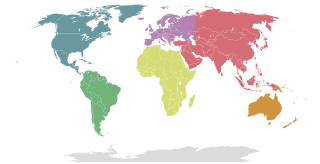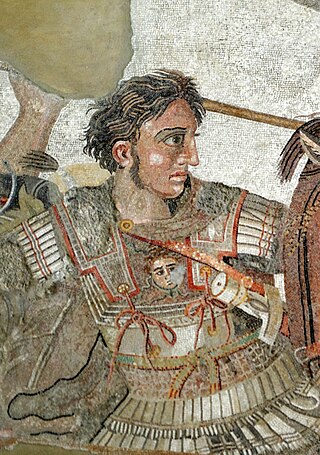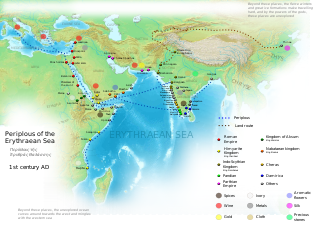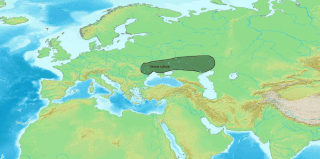 W
WThe Achaemenid conquest of the Indus Valley refers to the Achaemenid military conquest and occupation of the territories of the North-western regions of the Indian subcontinent, from the 6th to 4th centuries BC. The conquest of the areas as far as the Indus river is often dated to the time of Cyrus the Great, in the period between 550-539 BCE. The first secure epigraphic evidence, given by the Behistun Inscription, gives a date before or about 518 BCE. Achaemenid penetration into the area of the Indian subcontinent occurred in stages, starting from northern parts of the River Indus and moving southward. These areas of the Indus valley became formal Achaemenid satrapies as mentioned in several Achaemenid inscriptions. The Achaemenid occupation of the Indus Valley ended with the Indian campaign of Alexander the Great circa 323 BCE. The Achaemenid occupation, although less successful than that of the later Greeks, Sakas or Kushans, had the effect of acquainting India to the outer world.
 W
WThe association of Armenians with India and the presence of Armenians in India are very old, and there has been a mutual economic and cultural association of Armenians with India.
 W
WCentral Asia and Ancient India have long traditions of social-cultural, religious, political and economic contact since remote antiquity. The two regions have common and contiguous borders, climatic continuity, similar geographical features and geo-cultural affinity. But the flow of people and the impact on native population and its archaeogenetics have been negligible throughout the thousands of years of contact.
 W
WGreco-Buddhism, or Graeco-Buddhism, is the cultural syncretism between Hellenistic culture and Buddhism, which developed between the 4th century BCE and the 5th century CE in Bactria and the Indian subcontinent. It was a cultural consequence of a long chain of interactions begun by Greek forays into India from the time of Alexander the Great. The Macedonian satraps then conquered by the Mauryan Empire, under the reign of Chandragupta Maurya. The Mauryan Emperor Ashoka would convert to Buddhism and spread the religious philosophy throughout his domain, as recorded in the Edicts of Ashoka.
 W
WIn ancient times, trade between the Indian subcontinent and Greece flourished with silk, spices and gold being traded. The Greeks invaded South Asia several times, starting with the conquest of Alexander the Great.
 W
WThe Heliodorus pillar is a stone column that was erected around 113 BCE in central India in Besnagar. The pillar was called the Garuda-standard by Heliodorus, referring to the deity Garuda. The pillar is commonly named after Heliodorus, who was an ambassador of the Indo-Greek king Antialcidas from Taxila, and was sent to the Indian ruler Bhagabhadra. A dedication written in Brahmi script was inscribed on the pillar, venerating Vāsudeva, the Deva deva the "God of Gods" and the Supreme Deity. The pillar also glorifies the Indian ruler as "Bhagabhadra the savior". The pillar is a stambha which symbolizes joining earth, space and heaven, and is thought to connote the "cosmic axis" and express the cosmic totality of the Deity.
 W
WHinduism in Armenia remains a minor feature in Armenian religious life, generally represented through The International Society for Krishna Consciousness and a minority of Indian students, with backgrounds in Hinduism.
 W
WSoutheast Asia was under Indian sphere of cultural influence starting around 290 BC until around the 15th century, when Hindu-Buddhist influence was absorbed by local politics. Kingdoms in the southeast coast of the Indian Subcontinent had established trade, cultural and political relations with Southeast Asian kingdoms in Burma, Thailand, Indonesia, Malay Peninsula, Philippines, Cambodia and Champa. This led to Indianisation and Sanskritisation of Southeast Asia within Indosphere, Southeast Asian polities were the Indianised Hindu-Buddhist Mandala.
 W
WThe Battle of the Hydaspes was fought in 326 BC between Alexander the Great and King Porus of the Paurava kingdom on the banks of the Jhelum River in the Punjab region of the Indian subcontinent. The battle resulted in a Greek victory and the surrender of Porus. Large areas of the Punjab between the Hydaspes (Jhelum) and Hyphasis (Beas) rivers were absorbed into the Alexandrian Empire, and Porus was reinstated as a subordinate ruler.
 W
WIndica is the name of a short military history about interior Asia, particularly the Indian subcontinent, written by Arrian in 2nd-century CE. The subject of the book covers the expedition of Alexander the Great that occurred between 336 and 323 BCE, about 450 years before Arrian. The book mainly tells the story of Alexander's officer Nearchus’ voyage from India to the Persian Gulf after Alexander the Great's conquest of the Indus Valley. However, much of the importance of the work comes from Arrian’s in depth asides describing the history, geography, and culture of the ancient Indian subcontinent. Arrian wrote his Indica in the Ionic dialect, taking Herodotus for his literary mode.
 W
WIndo-Roman relations began during the reign of Augustus, the first emperor of the Roman Empire. The presence of Romans in the Scythia and India and the relations between these regions during the period of the Roman Empire are poorly documented. Before the conquests of Alexander in India, there are no surviving accounts by contemporaries or near-contemporaries, so modern understanding depends on more abundant literary, numismatic, and archaeological evidence, mainly relating to the trade between them.
 W
WIndo-Roman trade relations was trade between the Indian subcontinent and the Roman Empire in Europe and the Mediterranean Sea. Trade through the overland caravan routes via Asia Minor and the Middle East, though at a relative trickle compared to later times, antedated the southern trade route via the Red Sea and monsoons which started around the beginning of the Common Era (CE) following the reign of Augustus and his conquest of Egypt in 30 BCE.
 W
WIndo-Scythians were a group of nomadic Iranian peoples of Saka and Scythian origin who migrated southward into western and northern South Asia from the middle of the 2nd century BC to the 4th century AD.
 W
WIndus–Mesopotamia relations are thought to have developed during the second half of 3rd millennium BCE, until they came to a halt with the extinction of the Indus valley civilization after around 1900 BCE. Mesopotamia had already been an intermediary in the trade of lapis lazuli between South Asia and Egypt since at least about 3200 BCE, in the context of Egypt-Mesopotamia relations.
 W
WLokakṣema was a Buddhist monk of Gandharan origin who traveled to China during the Han dynasty and translated Buddhist texts into Chinese, and, as such, is an important figure in Chinese Buddhism.
 W
WThe Pompeii Lakshmi is an ivory statuette that was discovered in the ruins of Pompeii, which was destroyed in the eruption of Mount Vesuvius 79 CE. She was found by Amedeo Maiuri, an Italian scholar in 1938. The statuette has been dated to the first-century CE. The statuette is thought of as representing an Indian goddess of feminine beauty and fertility. It is possible that the sculpture originally formed the handle of a mirror. Lakshmi is a reminder of commercial trade of goods and resources between India and Italy in the first century CE. Over the years historians have been able to connect Roman trade with the far east specifically India.
 W
WThe Saka, Śaka, Shaka, Śāka or Sacae were a group of nomadic Iranian peoples who historically inhabited the northern and eastern Eurasian Steppe and the Tarim Basin.
 W
WThe Seleucid–Mauryan War was fought between 305 and 303 BCE. It started when Seleucus I Nicator, of the Seleucid Empire, sought to retake the Indian satrapies of the Macedonian Empire which had been occupied by Emperor Chandragupta Maurya, of the Maurya Empire.
 W
WThe word Yona in Pali and the Prakrits, and the analogue "Yavana" in Sanskrit, are words used in Ancient India to designate Greek speakers. "Yona" and "Yavana" are transliterations of the Greek word for "Ionians", who were probably the first Greeks to be known in the East.